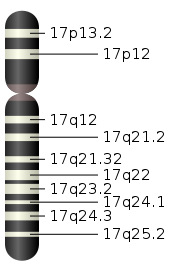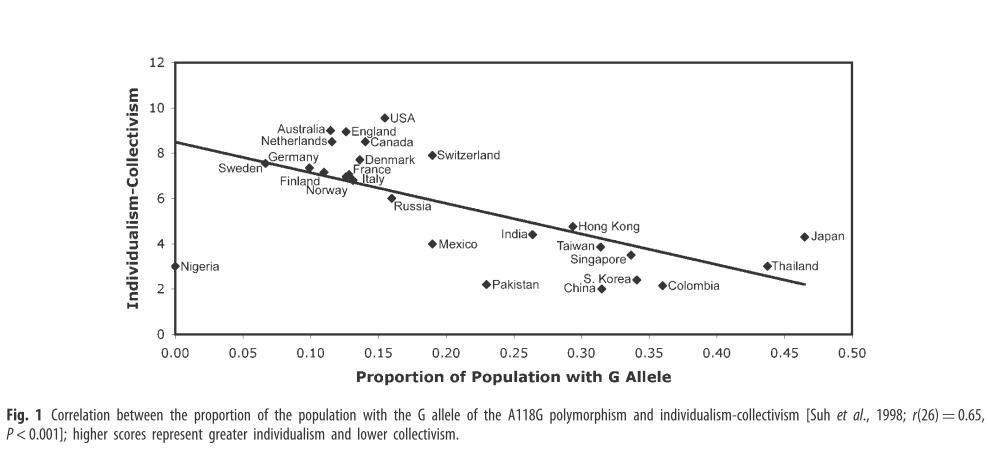![]() Cultural differences are often attributed to events far removed from genetics. The basis for this belief is often based on the assertion that if you take an individual, at birth, from one society and implant them in another, then they will generally grow up to become well-adjusted to their adopted culture. Whilst this is more than likely true, even if there may be certain cultural features that may disagree with someone of a different ethnic background (e.g. degrees of alcohol tolerance), the situation is not as clear cut as certain political factions may have you believe. Yet, largely due to studies on gene-culture coevolution, we are now starting to understand the complex dynamics through which genes and culture interact.
Cultural differences are often attributed to events far removed from genetics. The basis for this belief is often based on the assertion that if you take an individual, at birth, from one society and implant them in another, then they will generally grow up to become well-adjusted to their adopted culture. Whilst this is more than likely true, even if there may be certain cultural features that may disagree with someone of a different ethnic background (e.g. degrees of alcohol tolerance), the situation is not as clear cut as certain political factions may have you believe. Yet, largely due to studies on gene-culture coevolution, we are now starting to understand the complex dynamics through which genes and culture interact.
First, a particular culture may exert selection pressures on genes that provide an advantageous benefit to the adoption of a particular cultural trait. This is evident in the strong selection of the lactose-tolerance allele due to the spread of dairy farming. Second, pre-existing gene distributions provide pressures through which culture adapts. Off the top of my head, one proposed example of this is a paper by Dediu and Ladd (2007), which looked at how the distribution of the derived haplotypes of ASPM and Microcephalin may have subtly influenced the development of tonal languages. The paper in question, however, is looking more broadly at culture. Specifically, the authors, Baldwin May and Matthew Lieberman, examine recent genetic association studies and how within-variation of genes involved in central neurotransmitter systems are associated with differences in social sensitivity. In particular, they highlight a correlation between the relative frequencies of certain gene-variants and the relative degree of individualism or collectivism within certain populations.
Genetic Variation and Social Sensitivity
The first part of their review is on genetic variation in genes associated with the serotonin transporter, the μ opioid receptor and monoamine oxidase A. Each of these genes influence social sensitivity in various ways. For instance, the widely studied polymorphism of the serotonin transporter gene (SLC6A4), known as 5-HTTLPR, is believed to influence personality traits. At this location an individual can have one of the following genotypes: short/short, short/long, long/long. In a report looking at the influence of life stress on depression, Caspi et al (2003) found that individuals with one or two copies of the short allele were more likely to exhibit depressive symptoms than individuals homozygous for the long allele. Later studies have shown that the interaction between the 5-HTTLPR and stress extends to other phenotypes influenced by the serotonin system, including:
[…] post-traumatic stress disorder (Xie et al., 2009), antisocial behaviour (Lie and Lee, in press), substance use (Brody et al., 2009a), suicidality (Roy et al., 2007), sleep quality (Brummett et al., 2007) and anxiety sensitivity (Stein et al., 2007). The multiple phenotypes affected by this interaction attests to the robustness of the effect.

Despite making individuals more susceptible to stress-induced situations, the short allele is also associated with a greater sensitivity to positive environments. Taylor et al (2006) demonstrate that when short/short individuals experienced more positive than negative events over a 6-month period, they tended to show the lowest levels of depression. As May & Lieberman (2010) note:
Subsequent research has shown that this relationship between life events and affect for individuals with the short/short genotype was primarily driven by the social events, as the nonsocial events were not significantly related to the affect (Way and Taylor, 2010). Other groups have found heightened sensitivity to positive social influences amongst short allele carriers as well, which has even been documented using neurochemical measures (Manuck et al., 2004). Thus, these results suggest that the 5-HTTLPR moderates sensitivity to social influence regardless of its valence.
The argument developed from these studies, among others, is one where short/short individuals embedded in a highly interconnected social network, as seen in collectivist cultures, are somewhat insulated against negative events that may impact upon them more harshly in individualist societies. Similar conclusions are drawn for polymorphisms influencing the opioid system (A118G) and monoamine oxidase A (MAOAuVNTR): here, individuals with social sensitivity alleles are particularly prone to the effects of social exclusion. With all of these studies being at the individual-level, the authors ask the following question: If a population had more or less of these alleles, might this affect the preferred forms of social interaction?
Social Sensitivity Alleles and Cultural Norms
In looking at populations, the general trend of the studies mentioned in this review suggest there is a higher prevalence of social sensitivity alleles in East Asian than in Caucasian populations. Take the A118G polymorphism: in a forthcoming study by Way et al, they find a robust correlation between this polymorphism and individualism-collectivism (see figure below). So, in populations showing a greater amount of collectivism, the G allele is more prevalent. Furthermore, this relationship remained significant even when per capita GDP and other factors were controlled for. This is also true for the 5-HTTLPR and, to a lesser extent, the MAOA-uVNTR alleles.
 As mentioned earlier, the idea the authors are putting forward is one of relationship between the relative proportion of these alleles and the predominant cultural features in population:
As mentioned earlier, the idea the authors are putting forward is one of relationship between the relative proportion of these alleles and the predominant cultural features in population:
In collectivistic cultures, relationships are enduring due to social ties that are reified by mutual obligations between members of the family, clan, or religion. These relationships are so salient that the self is defined by them. Thus, the implicit construction of the self in members of these cultures is inherently relational (Fiske et al., 1998). This social construction of the self may function akin to an implicit social support network (Kim et al., 2008) that is likely to buffer individuals with social sensitivity alleles from the adverse consequences of stress and improve life satisfaction.
Conversely, in individualistic cultures there is a tendency for a high degree of personal autonomy — that is, individual need can often trump the requirements of the group. It also has implications for those who are susceptible to the influence of social sensitivity alleles, including those of ethnic backgrounds where such alleles will appear in high frequencies. Take, for instance, those of East Asian descent living in the USA: here, these individuals suffer higher levels of major depression than Asians still living Asia. The same is also apparently true of US-born Latino’s who experience higher rates of depression than those born in foreign countries. A potential explanation, then, is that collectivism provides a network suitable for sustaining emotional well-being in those populations containing a high levels of social sensitivity alleles.
Of course, there are numerous problems with making such interpretations. The correlations here could simply be the product of random processes such as genetic drift. The big question that remains is the relationship between these alleles and the type of culture they foster. This brings us back to the start. So one interpretation, which ultimately depends on them controlling for demographic processes, is that the culture of collectivist societies provided a significant pressure in shaping the frequencies of the social sensitivity alleles. A similar scenario can be proposed for individualistic societies where instead they decrease the prevalence of social sensitivity alleles. However, it may simply be the case that the correlation is not significantly different from background genetic variation, with the culture instead being shaped by pre-existing distributions. As the authors note:
[…] it would suggest that genetic selection at these loci is not the explanation for the correlation. Rather, it would suggest that collectivism was ‘stickier’, representing a better fit in populations with a high proportion of putative social sensitivity alleles (Lieberman, 2009). In other words, the psychological and behavioral tendencies associated with collectivism may have been more likely to have been adopted and transmitted in populations with a higher prevalence of such social sensitivity alleles. Similarly, individualism may have represented a better fit for populations with a low proportion of social sensitivity alleles where less reactivity to social rejection or exclusion would have been beneficial.
Citation:
Way, B., & Lieberman, M. (2010). Is there a genetic contribution to cultural differences? Collectivism, individualism and genetic markers of social sensitivity Social Cognitive and Affective Neuroscience, 5 (2-3), 203-211 DOI: 10.1093/scan/nsq059

This is really interesting, and it changes the way we approach the question of what kind of society language originated in.
Also, if certain genetic traits better with more autonomy and less well with tight social networks, would these encourage geographic expansion of a population? It would be interesting to see the individualism-collectivism correlation for more African countries.
This may also link in with Rapoport’s rule – species in less diverse areas (higher latitudes) have a broader niche (i.e. individuals adapted for flexibility and autonomy). Is there a correlation between the proportion of the population with the G allele and latitude?
if certain genetic traits better with more autonomy and less well with tight social networks, would these encourage geographic expansion of a population?
Good question. One I don’t have an answer for, but it’s something certainly worth investigating. You would tend to think that those migrating are outliers of the general population, so perhaps they were more individualistic.
“Take, for instance, those of East Asian descent living in the USA: here, these individuals suffer higher levels of major depression than Asians still living Asia. The same is also apparently true of US-born Latino’s who experience higher rates of depression than those born in foreign countries. A potential explanation, then, is that collectivism provides a network suitable for sustaining emotional well-being in those populations containing a high levels of social sensitivity alleles.”
Though the Asians/Latinos may be born in the U.S., they were presumably exposed to somewhat different cultural values than the American norm when they were growing up. This could provide a basically non-genetic explanation for greater rates of depression later in life.